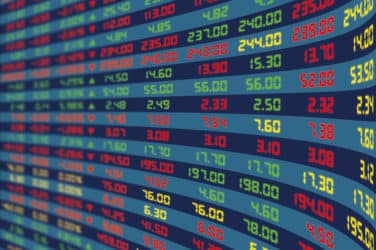
On Aug. 21, Chip Lowry retired from a 31-year career at State Street Global Advisors, where he was most recently Senior Managing Director. Markets Media Group Senior Writer Julie Ros spoke with Lowry about the electronification journey of FX markets and the industry’s ongoing challenges.
State Street was an industry leader in the early days of the electronification of FX, launching FX Connect back in 1996. Can you tell me a bit about that period, as well as your own history at the firm?
During those early days when we were building FXConnect for State Street and later integrating it into client systems, we were really giving clients the benefits of straight-through processing for the first time – which meant fewer errors and lower operational risk – groundbreaking work at the time. I still look at that period as the start of the buy side eFX era.
FXConnect was part of the GlobalLink business. After building out our client integration efforts, I was fortunate enough to move to London where I ran GlobalLink’s EMEA business for five years. It was during that time that State Street acquired Currenex in 2017. After the acquisition, I moved to New York for five years to work with the Currenex team. Subsequently, I returned to Boston to start the agency FX business for State Street. I then took over first line business risk management for Global Markets, and more recently, have been retooling the bank’s market surveillance efforts for the Global Markets businesses. In a nutshell, that’s a recap of the past 31 years!
What was the impetus for launching the agency business?
It was a response to clients’ increasing interest in their FX execution as market structures became more numerous – RFQ, streaming, algos, credit intermediation. Over the time that I’ve been in the market, credit intermediation is probably one of the biggest changes in foreign exchange. The concept that clients may want to outsource their FX instead of investing in a whole trading infrastructure for themselves drove that business. It’s all a reflection of the buy side starting to care more about their FX executions and recognizing it as an integral part of best execution.
Tell me about the WM and how it landed at the heart of the fixing scandal, for which a number of large banks were fined for colluding to manipulate FX rates ahead of the 4pm London Fix?
When MSCI was creating indexes for people to measure their managers against, they chose the WM 4:00pm London mid-rate as the rate that they would use to reval their foreign holdings and transactions back into US dollars for the purpose of calculating the index. So, WM became popular because MSCI included it in their index. As MSCI indexes became investible, people needed to get the WM rate in order to minimize tracking error.
The other mega trend occurring at the time was the move from active to passive management, and the tools by which they did passive management were based on indexes such as MSCI. There was also a shift in retirement plans from defined benefit to defined contribution. So you had a rise in personal retirement assets globally, such as 401k plans. These types of retirement plans typically invest in index funds. This all created a huge demand for WM and it became the default rate that clients demanded when trading.
In a sense, it also became an easy out for those managers not tracking indexes, because it became a de facto best execution rate: here’s the price I did. If anybody asks any questions about TCA or anything else, you’ve got the midpoint of the price to point to – and everybody was doing that. Part of the problem has been that a lot goes through WM that really doesn’t need to. That’s the most surprising thing to me – why are people using WM pricing if they aren’t doing benchmarking?
So, it’s probably no real surprise that something happened, because in essence, banks were offering unlimited liquidity at an unknown, future mid-rate. It became a loss leader for banks – or at best a revenue-neutral rate which was offered to get additional business. But you can’t offer a product at a loss forever – so I think that contributed to some banks colluding to ensure that they weren’t going to lose money.
The FX Fix is still widely used. What has changed – and what hasn’t – since price collusion around the fixing came to light in 2013?
What has changed is the introduction of a set of best trading practices called the FX Global Code, which encourages all FX market participants to adhere to its principles. The scandal also led a lot of people to question whether the 4pm Fix was the best mechanism for them to use.
Additionally, competitive pressures as well as industry netting utilities are helping banks become better at managing the risk, so they can offer WM on at least a revenue-neutral basis or better.
Post-scandal, we saw banks widen prices from mid to bid/ask or mid-plus. But now we seem to be back to mid again. And with the move to T+1 next year for US equity settlements, I think we’re going to see more FX volume pushed through WM as a way to cope with shortened equity settlement times. So that’s going to be an interesting space to watch.
How do you see the US move to T+1 impacting FX?
When WM started publishing prices, I don’t think they ever envisioned that somebody would create an index using their rates. I see the move to T+1 equity settlement having a similar effect on FX in a very unintended way – something built for the equity market having a knock-on effect in the foreign exchange market.
The challenge when it goes into effect is how industry participants will deal with it. Do they outsource it to an agent in North America to execute on their behalf on a fiduciary basis? Do they default to an option like WM? Do they have their custodian price the trade and forego active execution on those trades? These may be short-term questions while the long-term effects get figured out later. For example, people may default short-term to an easy option that minimizes operational risk, and over time they figure out a different answer. That’s something we’ve got to grapple with as an industry.
What has been one of the more surprising aspects of the FX market?
It’s amazing that for a market that’s been around for as long as it has that we are just now having the conversation on pre-hedging. Pre-Hedging has nothing to do with electronic markets, it’s just a business practice. Maybe that goes back to one of the mega trends – transparency – which has led us to ask questions around WM pricing, around last look, and around pre-hedging.
It just reminds us that there is still work to do in terms of getting the market to agree on a common set of principles and whether that’s disclosure. That goes hand-in-hand with transparency. Right now, everyone’s doing disclosures. I think the role of transparency in the market is a good, overarching theme generally.
Can you give a bit of background on disclosures?
As the market has become more transparent, that has naturally led people to ask a lot of questions around how trades are priced and orders are handled by their counterparties. Through the Global Code, the industry has grappled with some serious questions: what’s your timestamping policy? Do you aggregate client orders? What’s your methodology for filling simultaneous client orders? What’s your pre-hedging policy? As a result of the work that the GFXC has done on such questions, the industry has coalesced around standardized templates, which contribute to better transparency for this $7.5 trillion/day market.
Moving on to your most recent role – market surveillance – what has been the driving concern?
That conversation should really start with the rise of credit intermediation. The concept of a prime broker in foreign exchange was really a seismic shift, creating new market structures and bringing more participants into the market. It allowed non-banks to make prices to other clients and allowed clients to execute FX in incremental amounts instead of whole amounts. This opened the market up to more efficient pricing, more participants, and directly led to the ability for the buy side to use algorithmic trading. Today, high frequency trading firms are right up there with the banks in terms of market making.
Prime brokerage also led to the existence of both disclosed and undisclosed order book platforms. Now we have order book structures that look like other asset classes. Regulators are looking at these markets now and saying, ‘you really should have market surveillance on that type of activity’ because all the stuff that we worry about in the equity markets and the derivatives markets equally applies to these order book structures.
People thought they could take out -of-the-box equity market surveillance models and just put foreign exchange trades in them and they would work, but that is not the case. FX is a notoriously difficult asset class to do market surveillance on – there’s not one exchange, there are regulated venues and there are venues that aren’t regulated, and they trade 24/7. Plus, there’s a multitude of execution mechanisms. People can trade on the phone, they can do an electronic RFQ or RFS, they can execute through a prime broker into an order book structure, and they can use algos. All of those have different sets of risks associated with them. And although it’s the same asset class, it’s different risks for different execution styles.
To be able to accommodate those styles you have to create your own models to competently build an FX market surveillance effort. That work will never end because technology progresses, and you’ve got to keep up with it.
You’ve mentioned a few trends you’ve seen amongst the buy side in recent years. What are you seeing now?
The major trend has been the focus on transaction cost analysis (TCA). The FX industry still struggles with market data because of the fragmented nature of the market. There’s no consolidated tape as there is in equities. If a client calls and asks for a risk transfer price on a hundred million euros, they may get a different price than if they used a TWAP algo to execute a hundred million over time. Prices just aren’t comparable, so that’s the challenge with TCA. That said, there’s so much more transparency now, there are more ways to measure it. For the buy side, this has helped FX go from being an afterthought to a forethought, which is a big shift.







